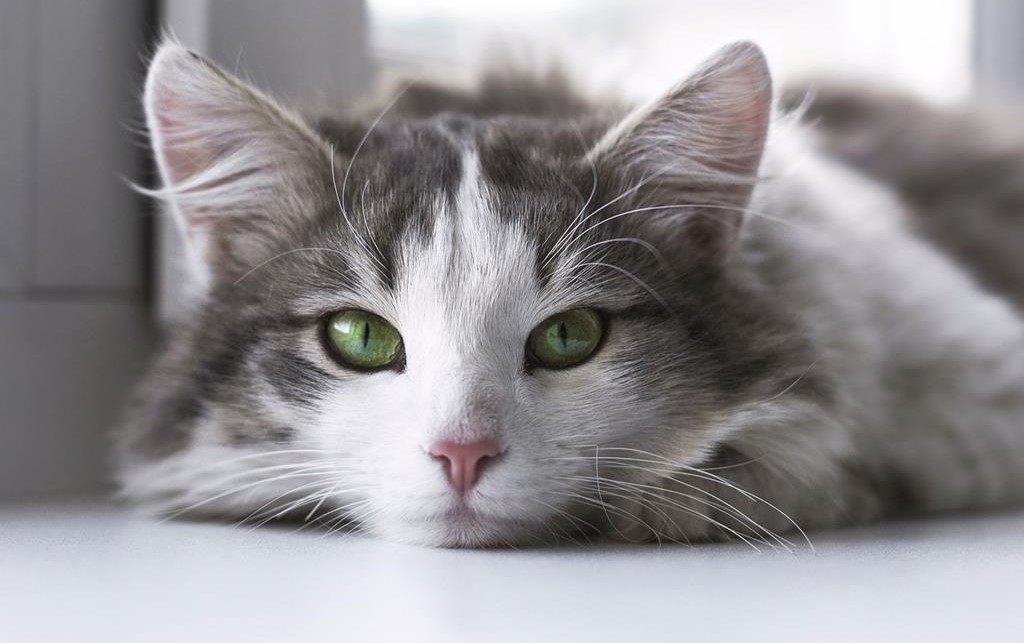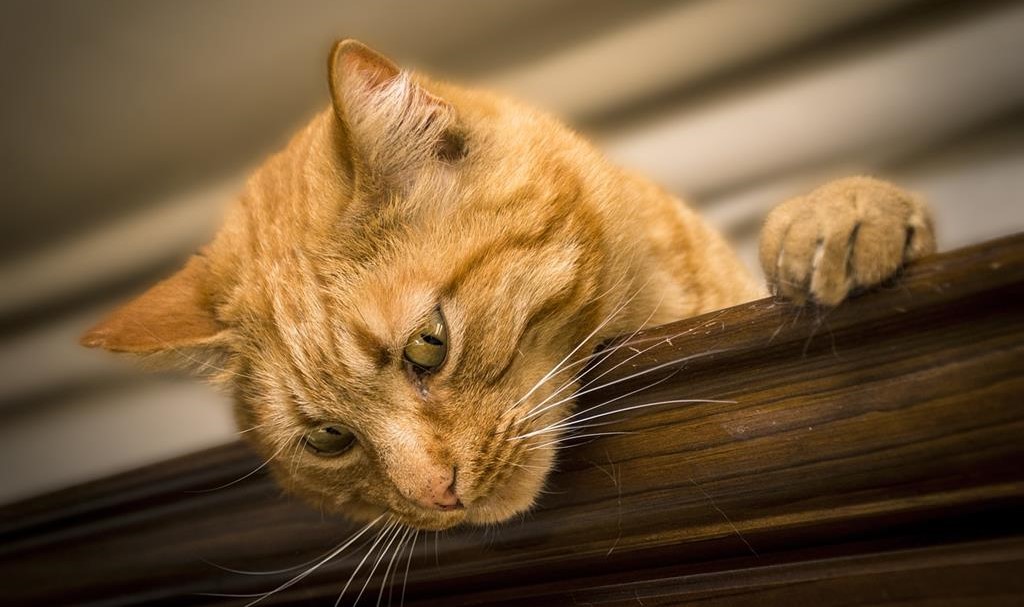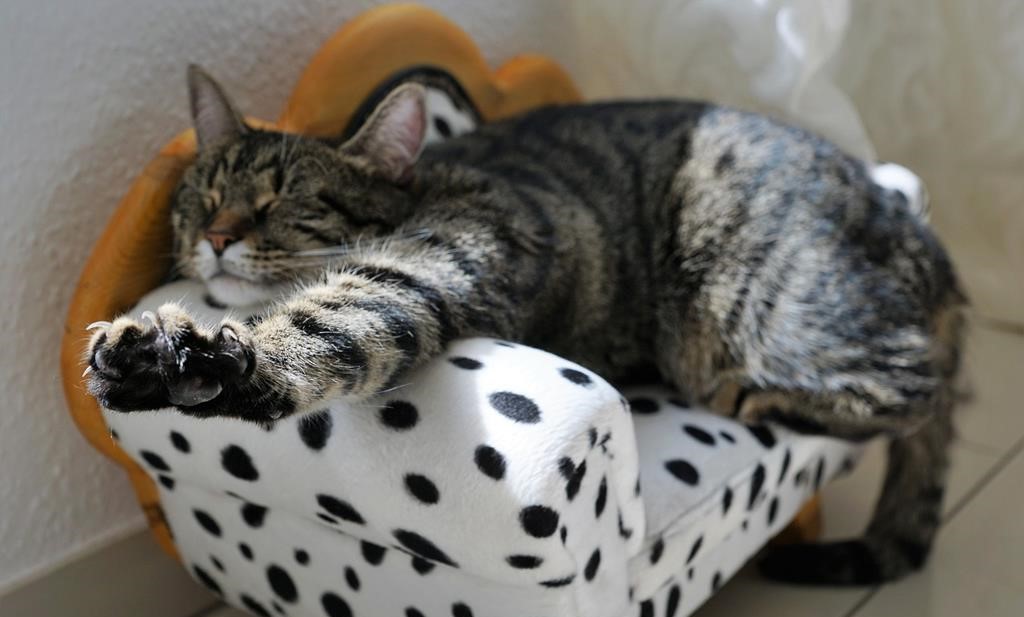Cat heat typically lasts for about 4-7 days and can occur every 2-3 weeks until the cat becomes pregnant or is spayed. During this time, female cats can be in heat for 24-48 hours and may exhibit behaviors like increased vocalization, restlessness, and rubbing against objects.
It is essential to understand the duration and symptoms of cat heat to provide proper care and prevent unwanted pregnancies.
What Is Cat Heat?
Cat heat, also known as estrus, is a period in a female cat’s reproductive cycle. It is marked by her readiness to mate and can last anywhere from a few days to a couple of weeks. During cat heat, the cat may display physical and behavioral changes to attract potential mates.
These changes can include restlessness, increased vocalization, and rolling around on the floor. Cats in heat may also experience an increase in affection toward their owners. It is important to note that cat heat is a natural part of a female cat’s reproductive cycle and is necessary for her to become pregnant.
However, it is recommended to have cats spayed to prevent unwanted litters and potential health issues.
Signs Of Cat Heat
Cat heat, also known as estrus, is the period when a female cat is sexually receptive. It usually lasts for about 4-10 days, but can vary from cat to cat. During this time, cats exhibit several physical and behavioral changes.
Physically, they may display a swollen vulva and an increase in urination. Additionally, they may become more affectionate and vocal, seeking attention from their owners. Some cats may also experience behavioral changes such as restlessness and increased aggression. These changes are due to hormonal shifts in the cat’s body, as their reproductive system prepares for mating.
It is important to note that unless you are planning to breed your cat, spaying is recommended to prevent unwanted pregnancies and reduce the risk of certain health issues. Understanding the signs of cat heat can help you better care for your feline companion during this natural reproductive cycle.
Cat Heat Cycle

The cat heat cycle consists of different phases, each with its own duration. These phases include proestrus, estrus, and postestrus. Proestrus is the beginning phase, lasting one to two days, during which the cat is not receptive to mating. Estrus, the main phase, lasts around four to six days, during which the cat is sexually receptive and may exhibit behaviors like rolling, vocalizing, and rubbing against objects.
Finally, postestrus occurs after estrus, lasting around seven to ten days, during which the cat’s reproductive system returns to normal. It’s important to note that the duration of each phase may vary between individual cats. Understanding the different phases of the cat heat cycle can help cat owners provide appropriate care and prevent unwanted pregnancies.
Factors Affecting The Duration Of Cat Heat
The duration of a cat’s heat, also known as estrus or the mating season, can be influenced by various factors. Here are some key factors that can affect the duration of cat heat:
-
Breed: Different cat breeds may exhibit variations in the duration and intensity of heat cycles. Some breeds may have shorter or longer heat periods.
-
Age: The age of the cat can impact the duration of heat. Generally, younger cats may experience shorter and more irregular heat cycles, while older cats may have more regular and longer heat periods.
-
Season: The breeding season for cats is influenced by environmental factors such as daylight length. Cats are often more likely to go into heat during the spring and summer months.
-
Health: The overall health of the cat plays a role in the duration of heat cycles. Illness or stress can affect the hormonal balance and potentially alter the length of the estrus cycle.
-
Nutrition: Adequate nutrition is essential for reproductive health. Malnutrition or a poor diet may impact the cat’s hormonal balance and reproductive cycle.
-
Weight: The body weight of the cat can affect its reproductive cycle. Overweight or underweight cats may experience irregular heat cycles or fertility issues.
-
Presence of Male Cats: The presence of male cats in the vicinity can influence the duration of heat. If a female cat is exposed to a male in close proximity, it may trigger or prolong her heat cycle.
-
Spaying: If a cat has been spayed, she will not go into heat. Spaying, which involves the removal of the ovaries and often the uterus, prevents the hormonal fluctuations associated with the estrus cycle.
It’s important to note that individual cats may vary, and some factors may have a more pronounced effect on certain individuals. If you have concerns about your cat’s reproductive health or behavior, it is recommended to consult with a veterinarian for personalized advice and guidance.
Typical Length Of Cat Heat
Cat heat, or estrus, typically lasts for about 4-10 days in most cats. However, the length can vary depending on several factors. Some cats may have shorter or longer heat cycles. For indoor cats, heat cycles can be influenced by factors such as exposure to sunlight and temperature changes.
Indoor cats tend to have shorter heat cycles compared to outdoor cats. Outdoor cats experience more natural changes in daylight and temperature, which can trigger longer heat cycles. It’s important to note that during heat, cats can exhibit certain behaviors such as yowling or increased affection.
Understanding these differences can help cat owners better manage their cat’s reproductive health. By monitoring the signs and duration of cat heat, owners can plan for spaying or breeding their cats accordingly.
Behavioral Management During Cat Heat
Behavioral management during cat heat involves implementing strategies to handle a cat in heat effectively. Providing a conducive environment is crucial to ensure the cat’s comfort during this period. This can include creating designated spaces with cozy bedding and toys.
It’s essential to avoid unwanted mating and pregnancy during cat heat. One way to achieve this is by keeping the cat indoors and away from other intact males. Additionally, supervision and monitoring can help prevent any potential escapes or encounters.
Understanding the signs of heat, such as increased vocalization and restlessness, can also aid in addressing the cat’s needs. By implementing these strategies, owners can ensure the well-being of their cat and manage their behavior during this particular phase.
Physical Care During Cat Heat

During a cat’s heat, providing appropriate physical care can help ensure the well-being of your pet and manage the associated behaviors. Here are some tips for caring for a cat in heat:
-
Keep Indoors: If your cat is not spayed and is in heat, it’s advisable to keep her indoors to prevent unwanted mating and to ensure her safety.
-
Provide Comfort: Create a comfortable and secure space for your cat to rest. This can include a quiet area with a soft bed or blanket where she can feel safe and relaxed.
-
Increased Affection: Cats in heat may seek more attention and affection. Spend extra time playing with and petting your cat to provide comfort and alleviate some of her stress.
-
Distraction and Play: Engage your cat in interactive play with toys to help redirect her energy and focus. This can be a good way to keep her occupied and reduce restlessness.
-
Scratching Posts: Provide scratching posts or pads to satisfy your cat’s natural urge to scratch. This can help alleviate stress and also prevent her from damaging furniture.
-
Maintain a Routine: Cats are creatures of habit, and maintaining a consistent routine can help reduce stress during heat cycles. Stick to regular feeding times and play sessions.
-
Grooming: Some cats may groom themselves excessively during heat. Brushing your cat can help reduce shedding and hairballs while also providing a soothing and calming effect.
-
Temperature Comfort: Ensure that your cat is comfortable in terms of temperature. Provide a cool and well-ventilated environment, especially during warmer seasons.
-
Monitor Behavior: Keep an eye on your cat’s behavior for any signs of distress or discomfort. If you notice any unusual symptoms or behaviors, consult with your veterinarian.
-
Consider Spaying: If you do not plan to breed your cat, spaying is a long-term solution to prevent heat cycles and unwanted pregnancies. Consult with your veterinarian about the appropriate age and timing for spaying.
Remember that each cat is unique, and their response to heat can vary. If you have concerns or if your cat’s behavior seems extreme or unusual, it’s always a good idea to seek advice from your veterinarian for tailored guidance and care.
Spaying And Neutering: A Long-Term Solution
Spaying or neutering a cat is a long-term solution for managing their reproductive cycles. This procedure offers various benefits, including controlling the duration of cat heat. By removing a female cat’s uterus and ovaries or a male cat’s testicles, the heat cycle is practically eliminated, preventing unwanted pregnancies and reducing the chances of certain reproductive diseases.
While there is no fixed age for spaying or neutering, it is generally recommended to wait until the cat is at least six months old. This allows for proper development and also minimizes the risk of complications during the surgery.
Ultimately, spaying or neutering your cat not only offers health benefits but also contributes to population control and responsible pet ownership.
Importance Of Understanding Cat Heat Duration
Understanding cat heat duration is crucial for pet owners as it helps in managing their cats’ reproductive cycle effectively. During cat heat, which typically lasts around 4 to 7 days, female cats experience behavioral changes and become receptive to mating.
Being aware of this duration allows pet owners to take necessary precautions to prevent unplanned pregnancies. Additionally, understanding the timing of cat heat can aid in identifying any potential health issues or abnormalities in the reproductive system. By monitoring and tracking their cat’s heat cycle, pet owners can ensure the well-being and health of their beloved feline companions.
It is essential to consult a veterinarian for further guidance and advice regarding cat heat and its duration to ensure the best care for your cat.
Responsible Pet Ownership
Encouraging responsible pet ownership through appropriate measures is essential in ensuring the wellbeing of cats during their heat cycles. Understanding how long cat heat lasts is crucial for pet owners. The duration can vary but typically ranges from 4 to 10 days.
It’s important to be aware of the signs of heat in cats, such as increased vocalization and restlessness, so that appropriate measures can be taken. Spaying or neutering cats is a recommended solution to prevent unwanted pregnancies and reduce the frequency and intensity of heat cycles.
Responsible pet owners should consult with their veterinarian to discuss the best timing for these procedures. By taking proactive steps in managing cat heat and promoting responsible pet ownership, the happiness and health of our feline companions can be ensured.
Frequently Asked Questions Of How Long Does Cat Heat Last
How Long Does A Cat’S Heat Cycle Last?
A cat’s heat cycle, also known as estrus, typically lasts around 4 to 10 days. However, the exact duration can vary between individual cats. During this time, a female cat will exhibit behaviors such as yowling, increased affection, and restlessness, indicating she is fertile and ready to mate.
How Often Do Cats Go Into Heat?
Female cats can go into heat multiple times within a year. Typically, a cat will experience heat cycles every 2 to 3 weeks during the breeding season, which usually falls between spring and autumn. However, indoor cats and certain breeds can have heat cycles throughout the year.
Can A Cat’S Heat Be Shortened Or Stopped?
A cat’s heat cycle cannot be shortened or stopped without intervention. The only way to prevent a cat from going into heat is through spaying, which removes the ovaries and uterus. If you do not plan to breed your cat, spaying is recommended to prevent unwanted behaviors, such as yowling and roaming, and to reduce the risk of certain health issues, like uterine infections and mammary tumors.
Conclusion
Understanding the duration of cat heat is crucial for cat owners to provide the best care for their feline companions. Cat heat, or the estrus cycle, typically lasts around 4 to 10 days, but can vary depending on individual cats.
The signs and symptoms of heat in cats, including increased vocalization, restlessness, and heightened affection, serve as important indicators for owners to be prepared for potential mating behavior. Spaying or neutering cats is highly recommended to prevent unwanted pregnancies and health issues such as pyometra.
Moreover, consulting with a veterinarian is essential for accurate information and advice regarding cat heat and reproductive health. Being aware of these factors and taking necessary precautions will ensure a safe and comfortable experience for both cat and owner during this natural reproductive phase.



